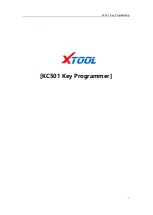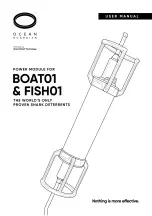
4
3. Operation
ATTENTION:
Never operate the centrifuge if the rotor shows any signs of
corrosion or mechanical damage.
Never operate with strongly corrosive materials.
3.1
Closing the lid
After the rotor has been properly loaded, close the centrifuge
lid.
3.2
Lid release
The "lid" button must be pushed to open the lid after a centrifuge run
has been completed.
3.3
Lid lock
The centrifuge can only be started with the lid closed. Do not attempt to
open the lid until the rotor comes to a complete stop.
3.4
Starting the centrifuge
To start the centrifuge select the desired run time by turning the time knob
in a clockwise direction. If performing a continuous run turn the time
knob counter clockwise into the "hold" position.
Once a run time is selected a given speed must be selected in order to
start the centrifuge.
The speed (rpm) can be selected between 1,000 and 4,000 rpm by turning
the knob to the 1, 2, 3 and 4 speed marks. To select a speed, turn the
speed knob to the 2 posistion to activate, then proceed by turning the
knob to the desired speed.
At the end of the preselected time, the centrifuge stops automatically.
To stop the centrifuge prior to the selected time, turn the timer knob to
the "OFF" position.
2.4
Centrifuge Installation
1. Make certain that the timer is set for the "off" position. Before
operating the centrifuge, check that the power source corresponds to
that on the manufacturer's rating label, then connect the power cord
to a properly grounded outlet
ATTENTION:
Ensure that the timer is in the "OFF" position, before connecting
the power cord.
!
NOTE: The clinical centrifuge is calibrated at 120 volts line voltage. Operating
the centrifuge at a line voltage other than 120V can significantlly impact the speed
settings below 2,000 RPM.



























